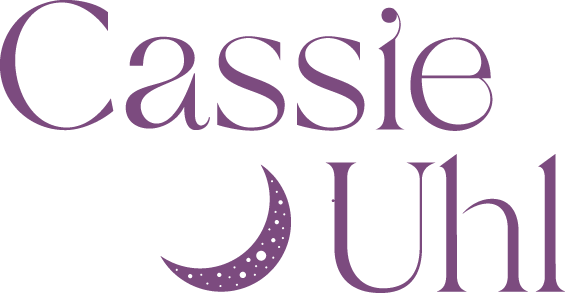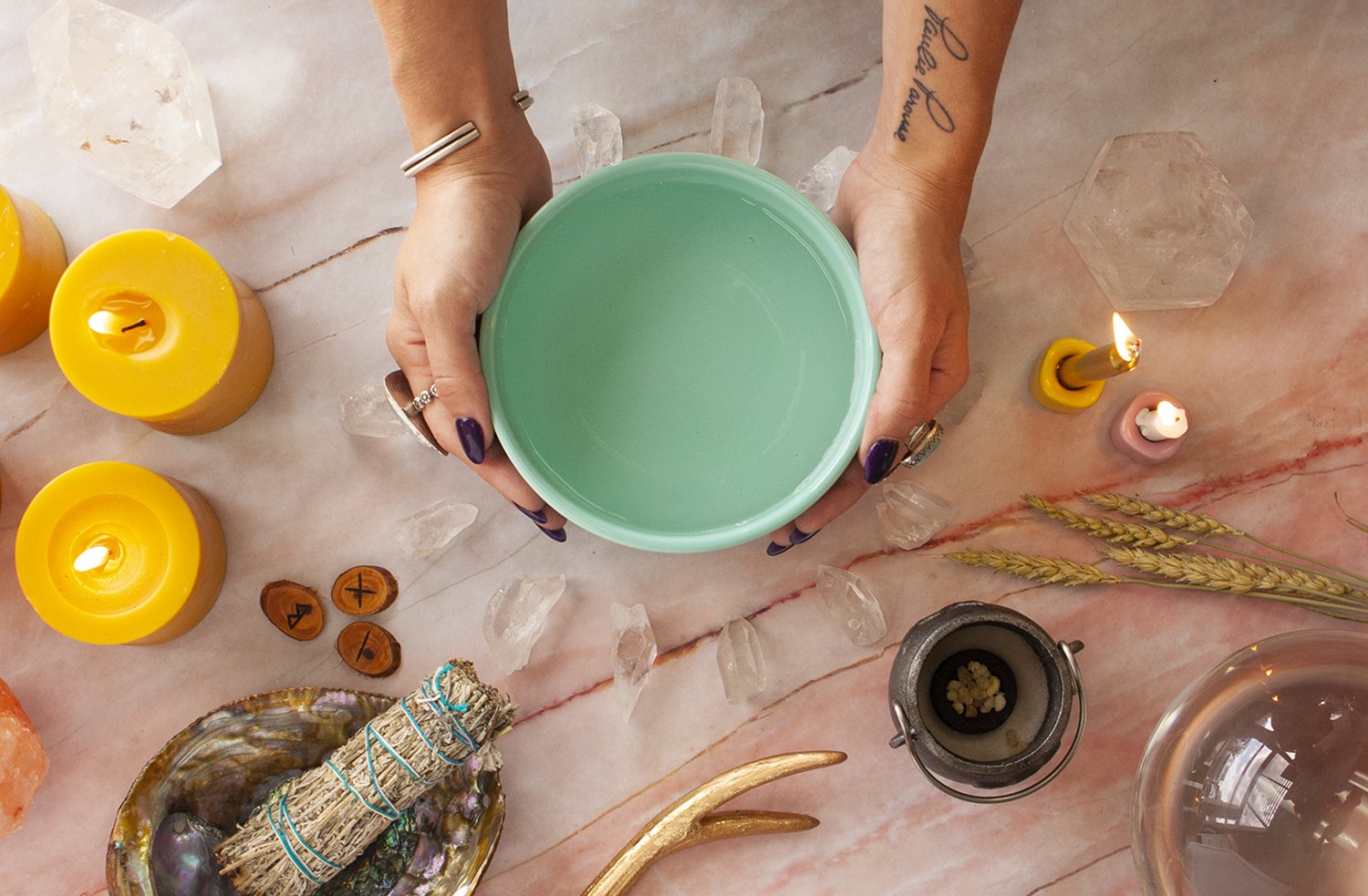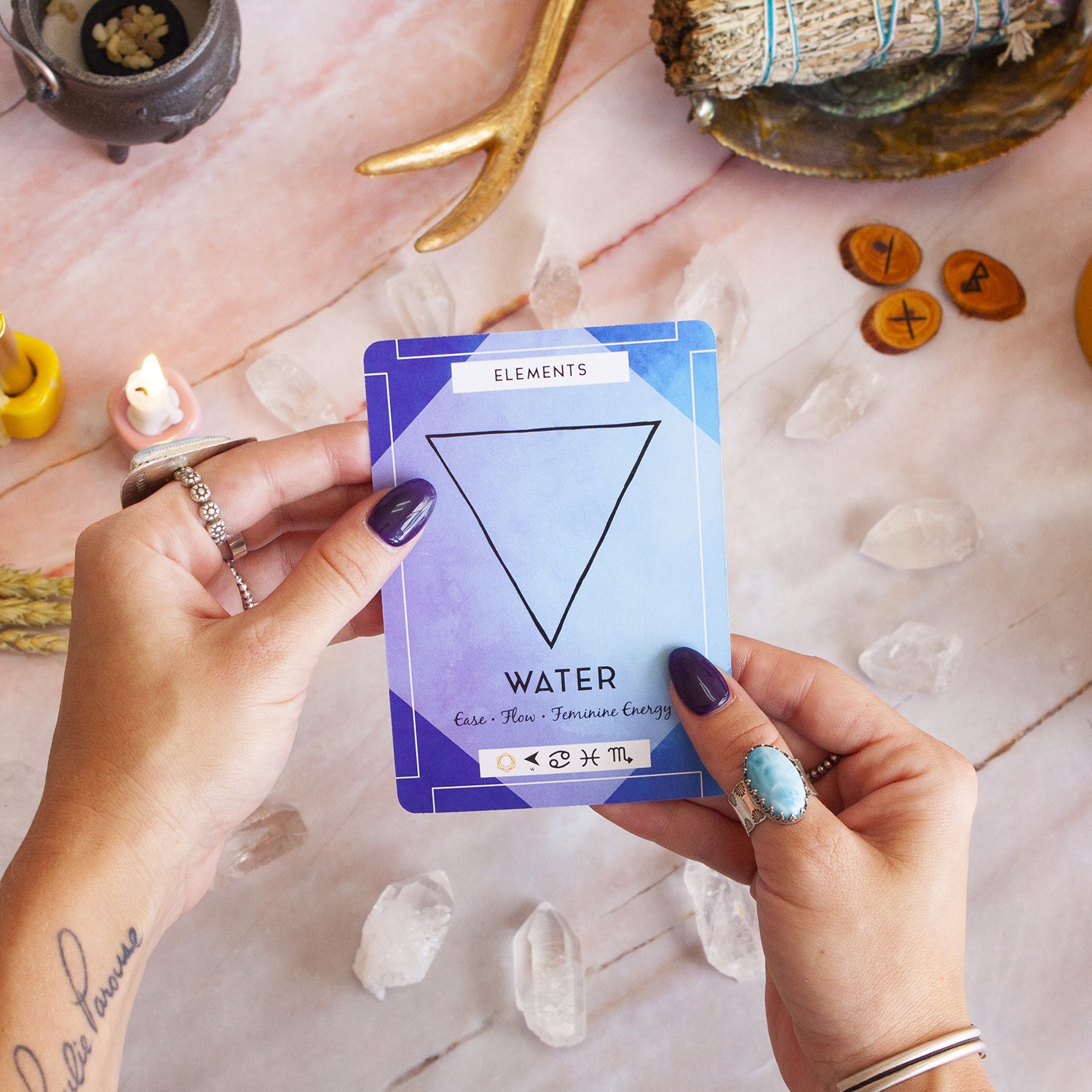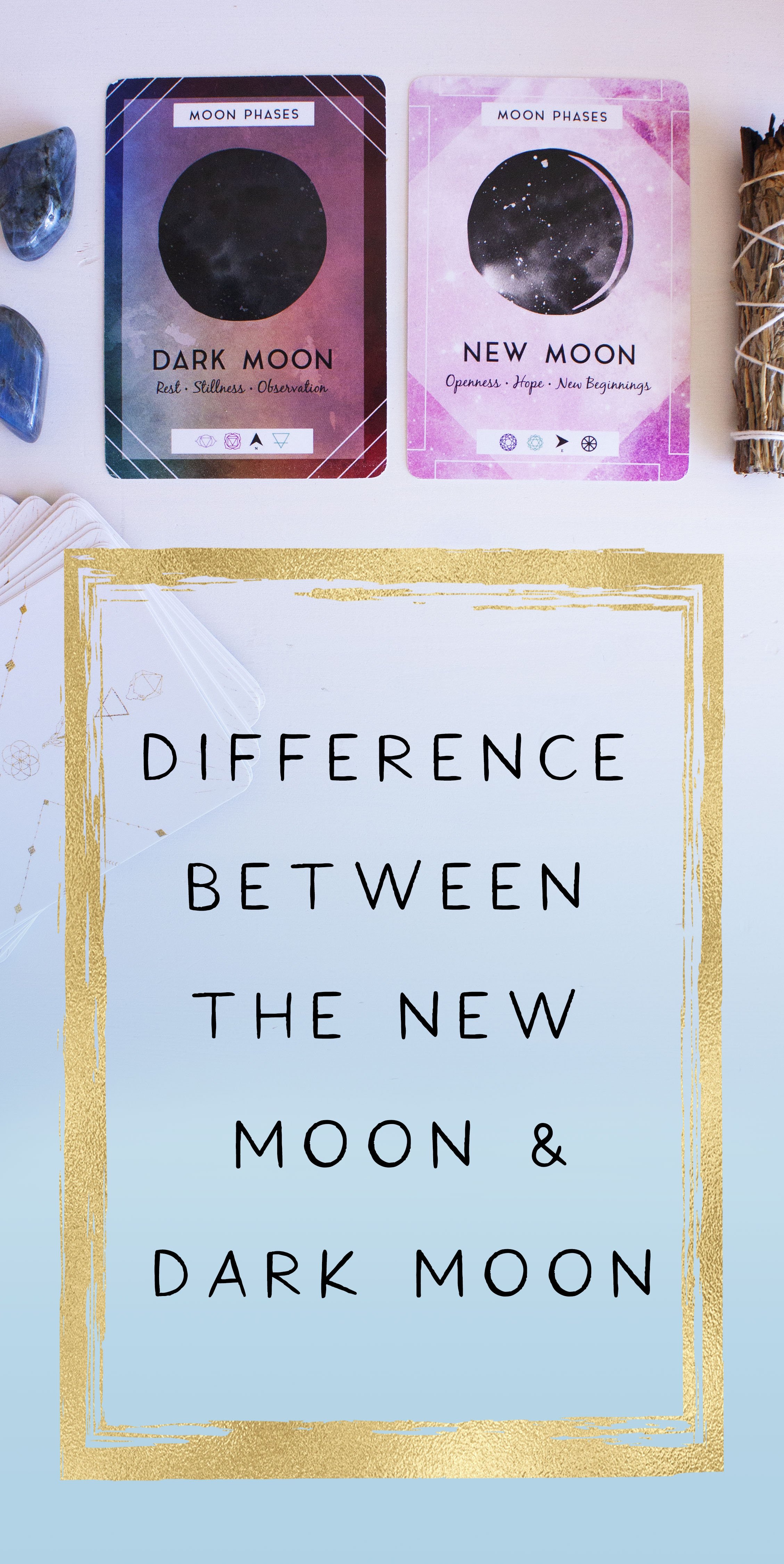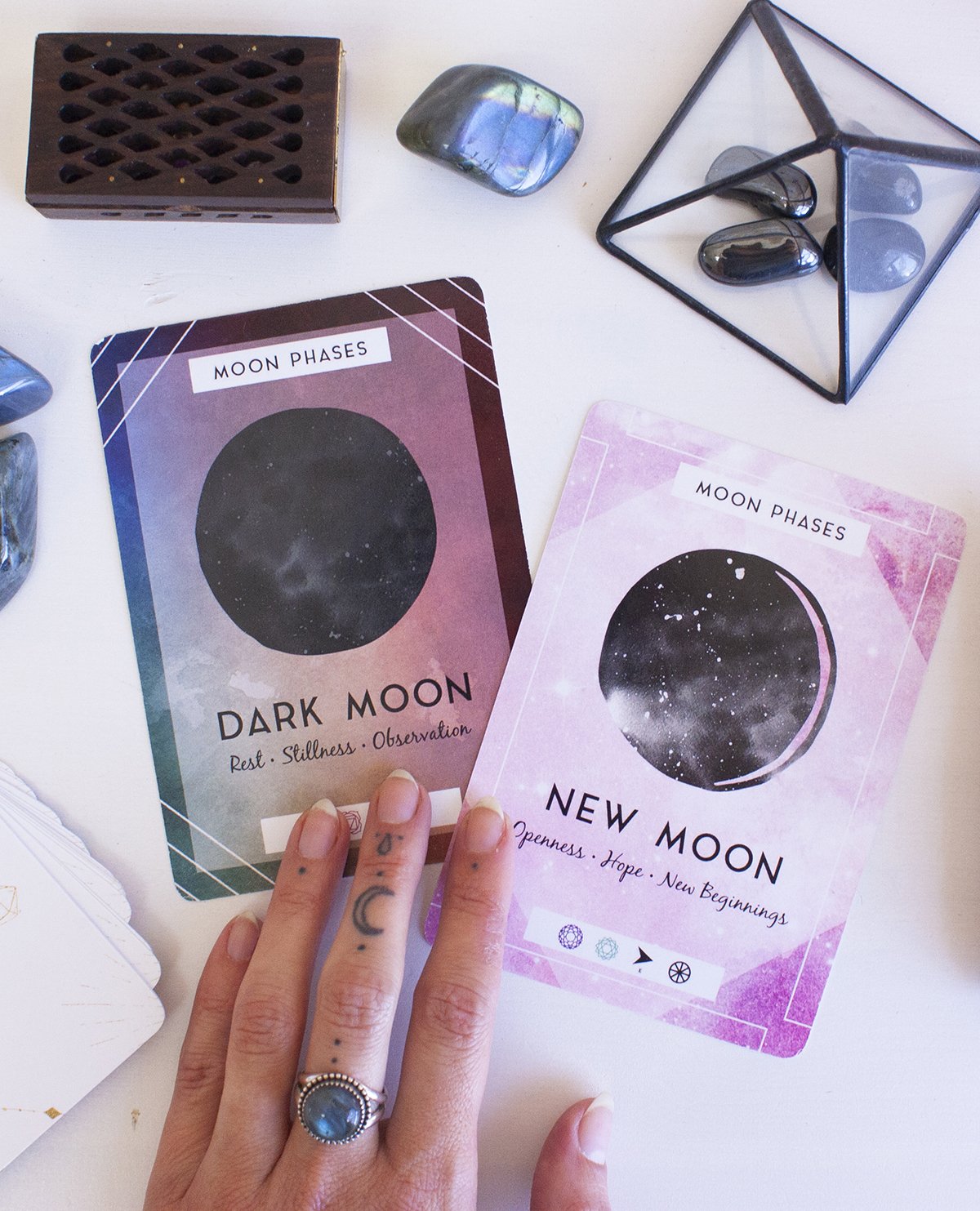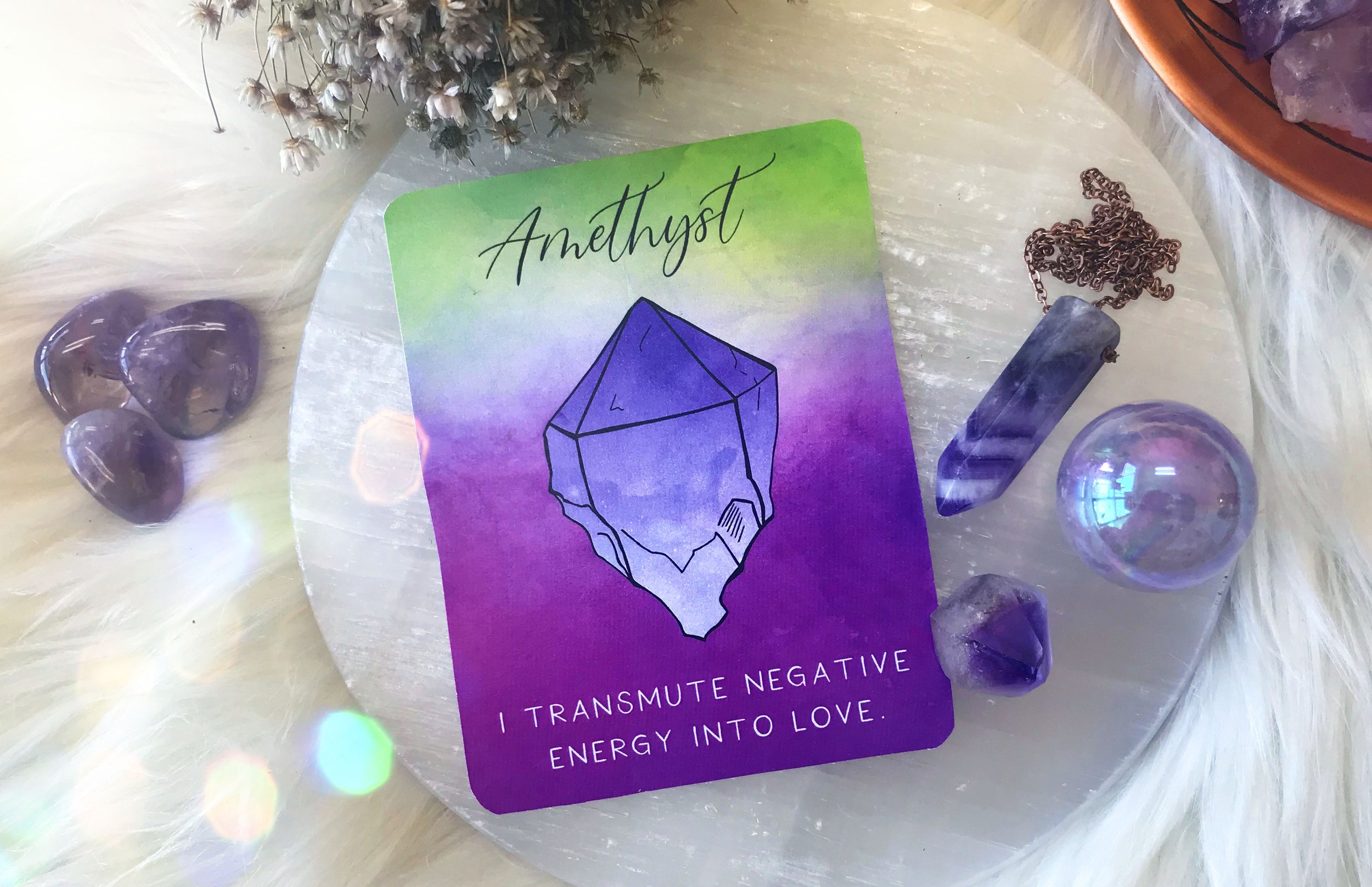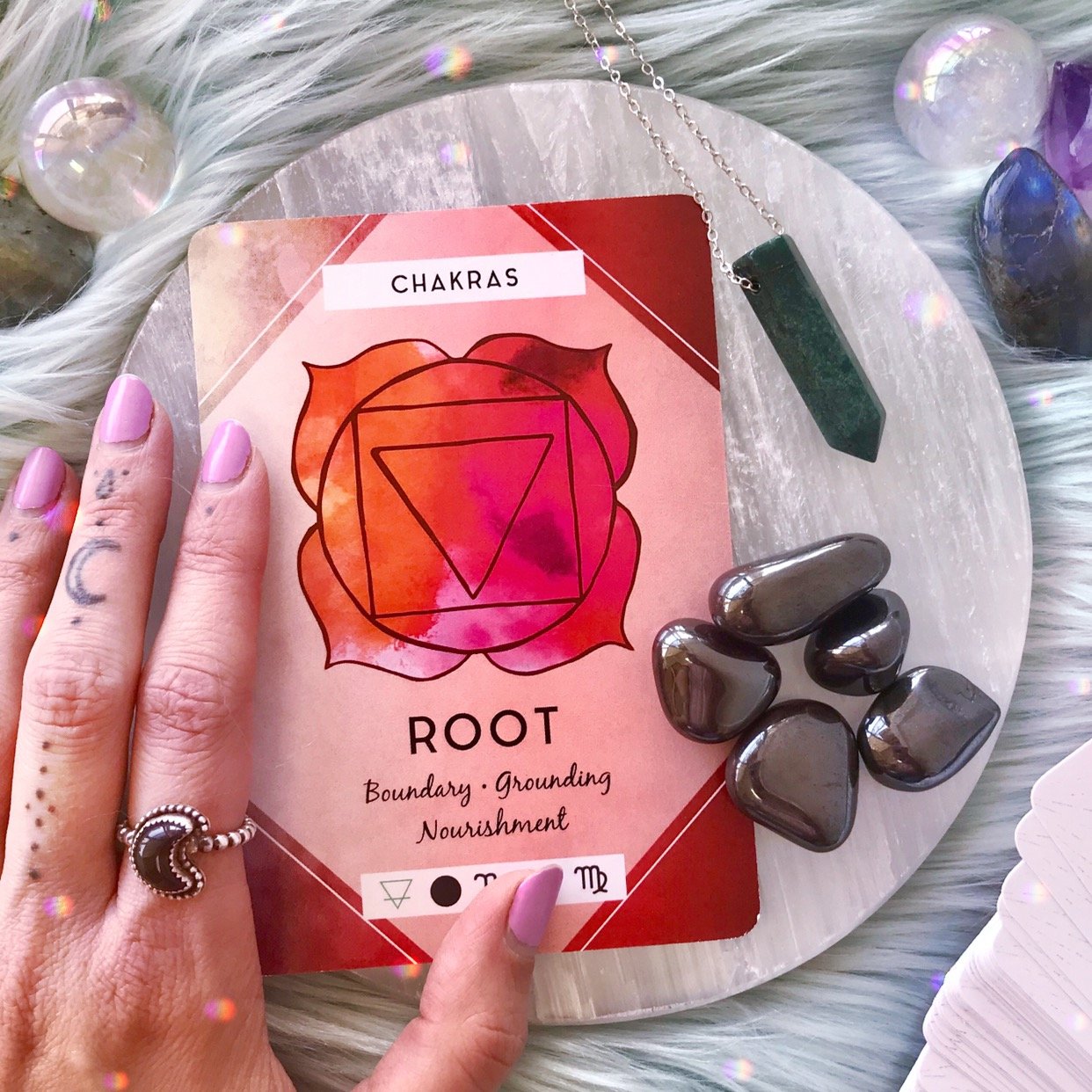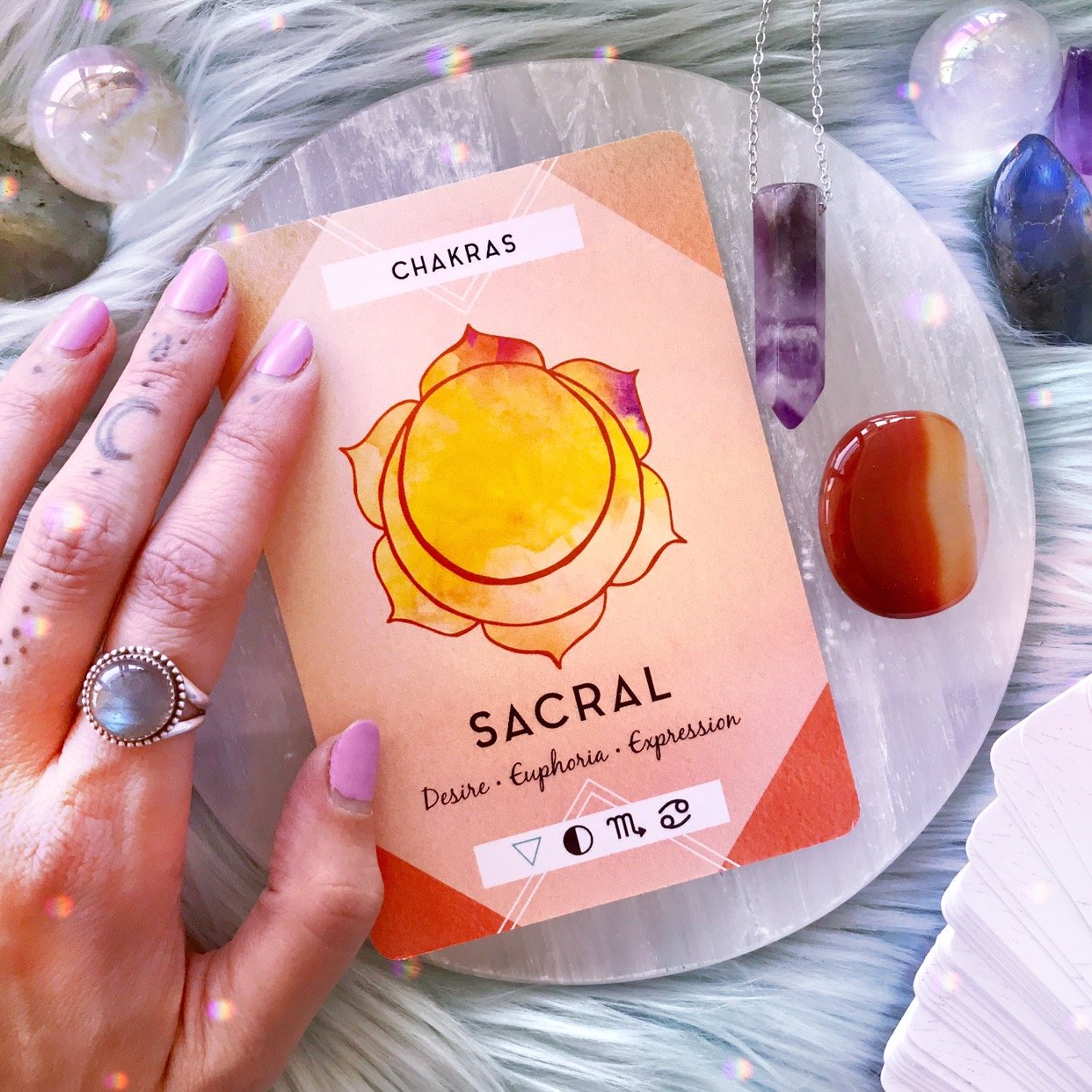WATER MAGICK 101
Water is associated with the moon, the direction of the west, the Cups suit in the tarot, and the zodiac signs of Cancer, Scorpio, and Pisces. Water signifies intuition, surrender, dreams, emotions, and psychic abilities. It is oceans, rivers, ponds, the moon, waterfalls, light rain, hurricanes, and tsunamis. It extinguishes fire and floods Earth. It cleanses and purifies, and connects us with the deepest parts of ourselves.We can use the element of water in ritual, spellwork, and spiritual practice and that’s what I’ll be talking about in this blog. Keep scrolling to learn what water magick is and find different ways to practice it.WHAT IS WATER MAGICK?
Water is associated with the moon, the direction of the west, the Cups suit in the tarot, and the zodiac signs of Cancer, Scorpio, and Pisces. Water signifies intuition, surrender, dreams, emotions, and psychic abilities. It is oceans, rivers, ponds, the moon, waterfalls, light rain, hurricanes, and tsunamis. It extinguishes fire and floods Earth. It cleanses and purifies, and connects us with the deepest parts of ourselves.
We can use the element of water in ritual, spellwork, and spiritual practice and that’s what I’ll be talking about in this blog. Keep scrolling to learn what water magick is and find different ways to practice it.
WHAT IS WATER MAGICK?
My favorite definition of magick comes from Starhawk, who said: “Magick is the ability to change energy at will.” So water magick is simply changing energy using the element of water and all that it represents, as I shared above.
We can do magick with any of the elements. There is air magick, fire magick, and Earth magick as well. But in this article, we’ll be exclusively exploring water magick.
SCRYING
Scrying is an ancient divination practice where you connect with your intuition and make the unseen seen by gazing onto a reflective surface. Some common reflective surfaces to use are the full moon or a black bowl filled with water.
You can do scrying with other substances such as fire, a crystal ball, or a mirror, but when working with water magick you want to choose something associated with water like the options I’ve shared above.
To begin your scrying practice, create a ritual space for yourself and either go outside and find a view of the moon or gather your bowl and water. As I walk you through scrying, I’ll use the example of a bowl of water. For this practice, you’ll want to be in a dark room with only one or two candles lit.
Once your space is ready, enter a trance state through meditating, energy work, drumming, chanting, breathwork, or any other practice that helps you drop into your subconscious mind.
Once you feel like you’re in an altered state of consciousness, relax your eyes and gaze into your bowl of water. Breathe deeply, let yourself soften, and ask a question silently (for example, what is holding me back in X situation? Or what do I need to know about Y?).
Gaze into the bowl and let yourself see what you see. It may take time for images to come up, but if you stay focused and present, they will. Allow the images, words, and sensations to flow, rather than holding on to them tightly.
When you feel like you’re done, you’re done! Spend some time journaling after about what you felt and saw to help you answer the questions you came to receive answers for. Remember, the subconscious mind works with symbolism, so don’t discount anything that you see even if you’re not quite sure what it means at first!
CLEANSING SPELL
This simple spell helps us use the element of water to release and is best worked during the waning and dark moon times. You’ll need:
A large glass of water
A piece of paper and pen
To start, choose what you’re focusing on releasing. Maybe is blocks to self-love, fear of being seen, a harmful way of speaking to yourself, or self-judgment.
Once you’ve decided what you’re ready to release (you’re welcome to spend some time journaling on this to get clear), start making a list of all the limiting beliefs and stories that you hold associated with this block.
For example, let’s say you’re working with clearing fear of being seen. Your list might hold beliefs like:
I’m not good enough
If people see who I really am, they won’t love me
I’m too weird
Keep letting the beliefs flow! I tend to fill up a whole page when I do this spell.
Once you have your list, it’s time to work the spell. Ground yourself, cast your circle, and pick up your list. You’re going to say the first belief out loud, starting with “I clear the belief that ________ from my body” and then taking a big sip of water. Pause and notice, feeling and visualizing the water moving through your body, cleansing this belief from your system on every level.
Repeat this for each belief on your list, taking your time and really feeling the beliefs move out of your body.
MOONGAZING
Personally, this is one of my favorite practices. It’s best done when the moon is full or around fullness. All you need is yourself, the moon, and your creativity for this practice.
In its simplest form, simply go outside, sit or stand under the moon, and gaze up at her beauty. Beam a heart full of love towards her, and feel her filling you up with her lunar energy.
You might like to take it further in a number of ways:
Drawing down the moon (opening up your arms and visualizing your crown opening to receive lunar energy
Singing to the moon
Writing poems to the moon and reading them to her
Asking her questions and sitting in meditation under her light to receive answers
There’s no right or wrong way to moon gaze. Let your intuition and creativity be your guide!
CHARGE WATER UNDER THE MOON
A powerful form of water magick is charging water under the full moon at night and then using it. In its simplest form, you simply drink the water. You can also use the water in spell workings, water your plants with it, or add it to your ritual bath (which we’ll explore below).
You are welcome to charge just a glass of water under the moon. However, you could also add a crystal to your glass that’s related to your intention for extra power. Here are some suggestions:
Rose quartz for a love infusion
Green aventurine for an abundance infusion
Amethyst for clear sight and intuition
Citrine for personal powerObsidian for protection
Carnelian for creativity
Clear quartz as an amplifier for any intention. Use alone or with another crystal!
You can work with any crystal you’d like, just remember that some crystals are water-soluble so check first to make sure it won’t dissolve in your water overnight.
SPEND TIME IN BODIES OF WATER
If you’re lucky enough to live near a body of water, going to that body of water whether it’s a lake, river, or ocean and immersing yourself in it for cleansing and purification is one of the most powerful forms of water magick there is. Turn a simple dip into magick by using your presence, breath, and intention to receive the medicine of the water.
Card featured from The Ritual Deck.
RITUAL BATH
If you can’t get to a body of water or it’s too cold to get in, a ritual bath is a beautiful way to immerse yourself in the power of water. In this blog post, I share some herbal bath recipes for specific intentions to help make your bath extra magical. But again, if all you bring to your bath is your presence, breath, and intention - that’s all the magick you need. Everything else is just an extra amplifier!
The Difference Between a Dark Moon & New Moon
There are two different schools of thought when it comes to differentiating between a new moon and a dark moon. Spoiler alert, there's not a right or wrong answer. The difference of opinion is between astronomers and Pagans. I'm going to share both schools of thought with you so you can decide what works better for you.
There are two different schools of thought when it comes to differentiating between a new moon and a dark moon. Spoiler alert, there's not a right or wrong answer. The difference of opinion is between astronomers and Pagans. I'm going to share both schools of thought with you so you can decide what works better for you.
Here's the short answer to this query. A new moon can be a dark moon, a dark moon can be a new moon, a waxing crescent can be a new moon, but a waxing crescent can't be a dark moon. Make sense? I know, not really. Allow me to explain!
Cards featured from The Ritual Deck.
The Astronomer's New Moon
First, let's take a look at the astronomer's viewpoint. For astronomers, the new moon happens when the moon is in between, or in conjunction, with the Earth and Sun. When the moon is in between the Earth and the Sun, it appears entirely dark for us.
I know what you're probably thinking, sounds like a dark moon, right? No. For astronomers, this point of the moon cycle is considered the new moon because it marks the beginning of a new moon cycle. Most astronomers do not use the term "dark moon," there's only the new moon. This is why most moon phase calendars don't recognize a dark moon phase.
The Pagan's New Moon
For many Pagans, practicing witches, and moon followers, the dark moon happens when the moon is dark and in conjunction with the Earth and the Sun (the astronomer's new moon). The new moon follows after the dark moon phase when the moon begins to show the tiniest illumination of its waxing or growth phase.
Cards featured from The Ritual Deck.
The Importance of The Dark Moon
For Pagan's and the like, the dark moon phase marks an important phase in the cycle of the moon. The dark moon phase represents a time of rest, integration, and observance. If you're using the moon for spellwork and manifesting it only makes sense that you would work in a night or two of reflection, especially before the busy energy of the new moon.
Astronomers and Pagans obviously use the moon cycles for entirely different purposes, so it's not surprising that they recognize the phases a little differently. As I said, there's not a wrong answer here, simply different opinions for different purposes.
Your manifesting won't be thrown askew if you skip the dark moon phase, but the dark moon will offer you a sweet moment of rest.
Meanings, Benefits, and Uses of Amethyst
Amethyst’s popularity is for a good reason - it’s beautiful, fairly easy to find, and energetically, it’s an incredibly magical stone.According to Judy Hall’s The Crystal Bible (a great book to pick up if you want to learn more about crystals!), amethyst is “an extremely powerful and protective stone with a high vibration.”Keep scrolling to discover some of the top benefits and uses of this special crystal!
Amethyst’s popularity is for a good reason - it’s beautiful, fairly easy to find, and energetically, it’s an incredibly magical stone.
According to Judy Hall’s The Crystal Bible (a great book to pick up if you want to learn more about crystals!), amethyst is “an extremely powerful and protective stone with a high vibration.”
Keep scrolling to discover some of the top benefits and uses of this special crystal!
BENEFITS & USES
PROTECTION
Need some protection from a negative environment or psychic attack? Amethyst is your new go-to! It’s a natural protector and tranquilizer, able to transmute negative energy into love. If you identify as an empath or a highly sensitive person (Don’t know? Find out in this blog!), amethyst is a must-have to keep you from absorbing other people’s energy.
Card featured from The Goddess Discovery Book V2 // Magick & Nature
ACCESS HIGHER STATES OF CONSCIOUSNESS
Amethyst has incredibly strong healing powers. It enhances spiritual awareness, opens your crown chakra, and helps you open to another reality — making it a helpful aid for meditation, visualization, and trance journeywork.
[Looking for more ways to open your crown chakra? Check out this blog: How to Open Your Crown Chakra and Know When It’s Blocked]
ADDICTION SUPPORT
Did you know that amethyst was traditionally worn to prevent drunkenness? It’s true! Amethyst has a sobering effect on overindulgence and helps overcome addictions and blockages of all kinds. Looking to quit alcohol, sugar, your TV habit, or reduce your phone time? Amethyst is here to support you!
CALMS THE MIND
Amethyst has a beautiful ability to calm the mind. If you ever feel mentally scattered, have trouble focusing, or struggle to assimilate and integrate new ideas, amethyst is your ally for a calmer, more focused mind. Along with this, it also aids in meditation and deeper understanding.
SUPPORTS GRIEVING
Amethyst can help provide emotional centering when you need it most, balancing your highs and lows. It can help you come to terms with loss, alleviating sadness and grief and gaining a higher perspective.If you’re going through a difficult time, like a deep transition, the death of a loved one or pet, or the shedding of an old identity, work with amethyst to support you.
OPENS INTUITION AND ENHANCES PSYCHIC GIFTS
Amethyst is said to be one of the most spiritual stones (and we have to agree!). It’s famous for bringing in spiritual wisdom, opening intuition, and enhancing psychic gifts. It gently opens your third eye, the center of your own inner wisdom.
That makes it the perfect stone to use for scrying, channeling, and pulling tarot or oracle cards. I recommend laying down and meditating with amethyst placed on your third eye for a few minutes before doing psychic work if you feel like you need some assistance!
Card featured from The Ritual Deck
INTUITIVE DREAMS & BETTER SLEEP
Amethyst is helpful for all things sleep! Amethyst can bring in deeper sleep, intuitive dreams, out-of-body experiences in your dreams, and aid in relaxation to help you fall asleep. If you struggle with insomnia or nightmares, you can place some amethyst under your pillow to help.
Learn more about dreamwork here.
AURA CLEANSING
Did you know that we actually have many bodies? Of course, we have our physical, mental, and emotional bodies. But we also have a spiritual body and an auric body, which includes layers of auric energy (Learn more about the aura here).
Amethyst helps cleanse your aura, that energy field that extends off of the body. It also balances and connects your physical, mental and emotional bodies, linking them to your spiritual body.
The Four Types of Indigos & How to Thrive as One
An Indigo person is anyone who has the color indigo as the primary color in their auric field. I shared more about the birth of this term and who Indigos are in a previous post. As I shared in the previous post, according to Nancy Tappe, most of us are Indigos now.
An Indigo person is anyone who has the color indigo as the primary color in their auric field. I shared more about the birth of this term and who Indigos are in a previous post. Click here if you missed it and want to learn more about who Indigos are before reading on!
As I shared in the previous post, according to Nancy Tappe, most of us are Indigos now. A more important question to ask is, what kind of Indigo are you? Throughout Nancy’s work with Indigos, she identified four types: humanist, artist, conceptualist, and catalyst. Each Indigo helps progress and connect humanity differently.
Read on to learn more about the different types of Indigos and determine what type of Indigo you are. You may identify strictly with one kind of Indigo personality or a combination of two. I’ve also shared gemstones and activities that will help support each type of Indigo.
Humanist
Humanist Indigos are the social butterflies of the new world. Think Instagrammer’s and YouTubers with huge followings, political mavens, and teachers. Humanists are extremely social beings who feel driven to connect with others. They’re always thinking of new ways to communicate with people, primarily through technology.
Humanist Key Points
Social
Verbal
Relatable
Humanist Purpose
Connect humanity on a larger scale through the use of technology.
Humanist Support
Humanists are often pegged as overactive, due to their social nature. The humanist Indigo will benefit from grounding exercises and stones. If you identify as a humanist and feel off-balance, spend time in nature, meditate on your root chakra, and try carrying grounding stones like hematite, obsidian, and jasper. If you’d like to amplify your humanist traits, focus on your throat chakra, and work with stones like lapis lazuli and sodalite.
Featured card deck: The Ritual Deck
Artist
Indigo artists are, not surprisingly, the artistic powerhouses of the new world. Young people that are seemingly born with the innate ability to sing, dance, and create are the Indigo artists of today. These Inidigos are extremely sensitive and emotional. Unlike previous generations, when emotions were meant to be stuffed and kept quiet, the Indigo artist has no problem expressing their feelings.
Artist Key Points
Expressive
Emotional
Artist Purpose
Create a more expressive and sensitive human race.
Artist Support
Empathic artists Indigos will benefit from learning techniques to protect their energy when they need a break from feeling everything. Working with stones like soothing and protective amethyst or energy shielding labradorite will prove helpful for Indigo artists. If you’d like to amplify your Indigo artist traits meditate on your sacral and throat chakra or work with stones like carnelian and opal.
Conceptualist
Conceptualist Indigos are the systems-oriented engineers and inventors of the new world. These Indigos are introverts and happier behind the scenes observing rather than mingling with their Indigo brothers and sisters. They are the ones inventing new technology and systems enabling humans to connect and communicate on a larger scale.
Conceptualist Key Points
Introverted
Focused
Problem solvers
Conceptualist Purpose
Create better tools and infrastructure to help connect humanity.
Conceptualist Support
Quiet conceptualists can find balance through spending time with people they love and trust. Find likeminded people that you feel comfortable spending time with to get you out of your head from time to time. Working with airy stones like citrine, calcite varieties, or yellow jasper will bring some levity to your world. To hone your problem-solving abilities focus on your solar plexus and sacral chakra.
Featured card deck: The Ritual Deck
Catalyst
Nancy Tappe identified the catalyst group as the smallest group of Indigos. It’s also the group that is least likely to know that they’re Indigos, partly because they’re so detached. Catalyst Indigos are catalysts because they push and force us into new ways of thinking, often without even intending to. These Indigos have a strong sense that they don’t fit in here and can have a difficult time relating to others. Catalysts are often given labels, but it’s their seemingly odd tendencies giving them labels that are forcing us to start doing things differently.
Catalyst Key Points
Detached
Demanding
Feels like they don’t fit in
Catalyst Purpose
Challenge the human race in new ways to inspire change.
Catalyst Support
Similar to conceptualists, catalysts will benefit from spending time with people they love and trust. Because socializing can feel so difficult for the catalyst, they must find people that they genuinely feel comfortable with, even if it’s on rare occasions. Because catalysts are often viewed as offbeat, they will benefit from protective stones like hematite and black tourmaline. Meditating on the throat chakra and working with stones like sodalite and lapis lazuli will help give catalysts a voice when they do need to speak up.
Featured card deck: The Ritual Deck
Featured card deck: The Ritual DeckYou may find different Indigo labels, but these four are based on Nancy Tappe's work. I think they’re a great starting place to understand the Indigo phenomenon better. Crystal children and starseeds are a topic for another day! I believe it’s valuable to start with understanding the purpose and types of the Indigos before diving into these new labels. If you identify as a crystal child, your parents are likely Indigos, and you probably have a lot of Indigo in your aura too.
Your Spiritual Tool Box for Stress & Anxiety
Whether you’re in full-on crisis mode or wading through a stressful season of life, knowing which direction to turn for relief can feel overwhelming. A quick fix like reaching for a glass of wine or a shopping splurge might help now and then, but it’s not a long-term solution. What tools can you rely on to help keep your cool when things seem to be falling apart around you?
Whether you’re in full-on crisis mode or wading through a stressful season of life, knowing which direction to turn for relief can feel overwhelming. A quick fix like reaching for a glass of wine or a shopping splurge might help now and then, but it’s not a long-term solution. What tools can you rely on to help keep your cool when things seem to be falling apart around you?
As a new mom to twins and a business owner, stress and anxiety have become part of my norm. Over the last year, I’ve had to put my spiritual tools to work like never before. I believe we all come to the Earth plane with an assortment of battles to accept and overcome to help our souls progress. We’re all fighting battles. The important part is how you walk through it.
Crisis often brings people to spirituality. I’m frequently asked, “ XYZ horrible thing has happened. Where do I begin?” Here are my top go-to tools that I turn to when life feels out of control.
1. Meditation & Mindfulness
Sit. Be still. Heal. When most people reach out to me asking how to ease stress and anxiety through their spiritual practice, they want a crystal suggestion to make everything OK. Sometimes, a crystal just won’t cut it and work better as an ancillary tool.
Meditation and mindfulness are at the top of my list because if you’re practicing them regularly, even five minutes a day, the rest of these tools will come easier.
Sitting in silence may feel incredibly uncomfortable, initially, if you’re going through a stressful season of life. If you haven’t given yourself a moment to process anything that’s happening in your life, of course, your mind is going to be running a mile a minute the moment you sit down.
During stressful times, I find it helpful to look at meditation as more of a time process and purge. Let all of the stuff that’s been running around in your mind run free. Permitting your thoughts to race around will allow you to process things you’ll otherwise keep cycling through over and over.
Once you’ve allowed your mind some time to run free with your worries, you might find a guided meditation helpful. I love all of the guided meditations from Meditation Oasis, and they have a wonderful selection of free meditations, including several specifically for stress and anxiety. You can also check out my Energy Reset Meditations Bundle and other guided meditations here.
Try meditating or sitting in silence for five to ten minutes a day for a week and see how you feel — having a hard time sticking to your meditation practice? Check out this blog post for ways to stick to it.
2. Body Awareness
Your miraculous body does so much for you during times of stress! Taking time to become aware of your body offers the opportunity to tune into something other than your worries and can give your body a needed release. We store stress and anxiety all over our bodies but often don’t even notice it because we become so used to it. Try this body awareness exercise a few times a week if you’re in the midst of a stressful time.
To become more aware of your body sit or lie down and name each part of your body. Start at your toes and work your way up to the top of your head. You can do this by saying something like “I feel my left big toe” or “I breathe into my right thigh” etc. for each body part. Take a breath for each body part you go over and spend extra time on any parts that feel extra tense. You can make this activity as long or as short as you need. If your time is limited, try doing this activity in the shower or at a stoplight. Even little moments of body awareness can help.
Mudras are another great tool your body offers. Learn more about using mudras during times of stress here.
3. Breathwork
When we’re stuck in worry and fear, our breath often stays high in our chest. Short chest breaths signal to our body that there’s danger nearby. Directing your breath deep into your belly can help break the anxiety cycle and send messages to your body that it’s OK to relax. It also can take a little bit more focus to remember to breathe from your belly, which can give your mind a break too.
Deep belly breaths are a given if you’re meditating or practicing body awareness but can be an invaluable tool when you’re on the run. Running late and stuck in traffic? Have a screaming child in your arms? Whatever your stressor and wherever you’re at your breath is available to you. The hardest part about this tool is remembering that it’s available. You can learn more about breathwork here.
Remember how I said that meditation and mindfulness would help with all of the other tools? If you’re meditating regularly, even five minutes a day, the thought to take deep belly breaths may come to you more readily than if you’re not meditating.
4. Accept the imperfectness
During times of stress and anxiety, it can be helpful, and sometimes necessary, to shift our expectations of ourselves. We so often compound our anxiety by placing pressure on ourselves to continue to perform at a near-perfect level even if we’re going through a stressful time. Warning, this one can feel the hardest because it often involves letting others see you in a vulnerable state.
Take an honest look at your week, what can you let go of to help you through this challenging time? Can you let go of cooking a few times and eat out? Can you call a friend or family member to ask for help with something you usually do for yourself? Can you take some time off from work to reset?Whether you choose to let some things go or are forced to, accept yourself and your life where it is in the moment, even if it doesn’t look the way you want it to right now. Accepting yourself where you’re at will let you off the hook from unnecessary self-imposed stress.
Working with a mantra can be helpful when working on acceptance. Find a list of mantras and learn more about using them here.
5. Crystals
Even though crystals may not be a cure-all for working through stress and anxiety, they can still serve a purpose. I like to think of crystals as a physical reminder of the tools I do have during stressful times.
Grounding stones like jasper, obsidian, onyx and smoky quartz are great candidates when it comes to keeping calm during times of stress. Beyond the grounding energy these stones offer, keeping them nearby can remind you throughout your day that you do have tools to help you through times of stress.
For more tips to help you get grounded, check out this blog post all about the root chakra.
I hope these tips make you feel more supported and offer some relief if you’re facing a hard season of life. Know that it will pass and that The Universe wants nothing but the best for you. Your soul is here to learn and grow!
Are you and Indigo? Probably, and here's why.
The term “Indigo child” is one of those buzz words in the spiritual community that you either love or hate. Some believe the label has genuinely caused harm, while for others it has been their saving grace. Doing an online search of the term reveals thousands of articles. With so much information out there about Indigos, it’s not a surprise that misinformation started spreading about them.
The term “Indigo child” is one of those buzz words in the spiritual community that you either love or hate. Some believe the label has genuinely caused harm, while for others it has been their saving grace. Doing an online search of the term reveals thousands of articles. With so much information out there about Indigos, it’s not a surprise that misinformation started spreading about them.
The truth is, most of us are Indigos, and the label might not be as mystical as you think.
Are Indigos essential to the growth of the human race? Yes, invaluable. Are all Indigos blue-eyed, psychic, empaths with magical powers? No.
The idea that all Indigos are highly spiritual beings is a misconception. Kathy Altarans and Nancy Tapp explain in Indigos: The Quiet Storm, “Are Indigos spiritual? Of course, but only in the sense that all humans are spiritual at some level.”
Let’s take a quick look at where the term originated before diving into who Indigos are.
The birth of Indigos
Nancy Tappe has a rare form of synesthesia that enables her to see a field of color around all living things. She spent most of her life learning and understanding the colors surrounding us, what they mean, and how they can benefit us.
In the late 1960’s she started to notice a new color emerge, Indigo. She saw the number of children born with the color indigo in their color field continued to increase every year. Before Nancy died in 2012, she estimated that 95% of all children born had Indigo in their color field. Even if you were born earlier than this time, you might have started to show some indigo in your auric field due to humanity shifting in this direction.
During Nancy’s time here on Earth, she dedicated much of her life to understanding Indigos and their purpose. She assessed that there are four primary categories of Indigos; artist, humanist, conceptualist, and catalyst. To assume that all Indigos are a bunch of fair-skinned, blue-eyed, empathic people goes against Nancy’s entire life’s work.
Why are Indigos here?
The goal of the Indigo is to connect the human race. The primary way that Indigos are doing this is through technology. Take a moment to think about how connected our species is due to technology. From Facebook (Nancy identified Mark Zuckerberg as an Indigo,) to texting, to the internet, the way that humans connect and interact has completely changed over the last century. Indigos are responsible for this change and continue to find new ways to connect the species daily.
Who are Indigos?
Like I mentioned above, most of us are Indigos, or at the very least have some indigo in our auric field. The simple definition of an Indigo is any person who has Indigo as the primary color in their aura. Going off a quiz or simple checklist to determine who is or isn’t an Indigo can be misleading. Indigos are all over the world and come from all different cultures, so the intricacies of the Indigo personality reflect the same vastness. The qualities of an Indigo from the 1960s compared to a young Indigo will vary as well.
A better question to start asking ourselves is, “What kind of Indigo am I?” Nancy identifies four different kinds of Indigos: artist, conceptualist, humanist, and catalyst. You can learn more about these categories here. Intrigued and would like to explore them deeper? Check out these books, Indigos: The Quiet Storm and Understanding Your Life Through Color.
